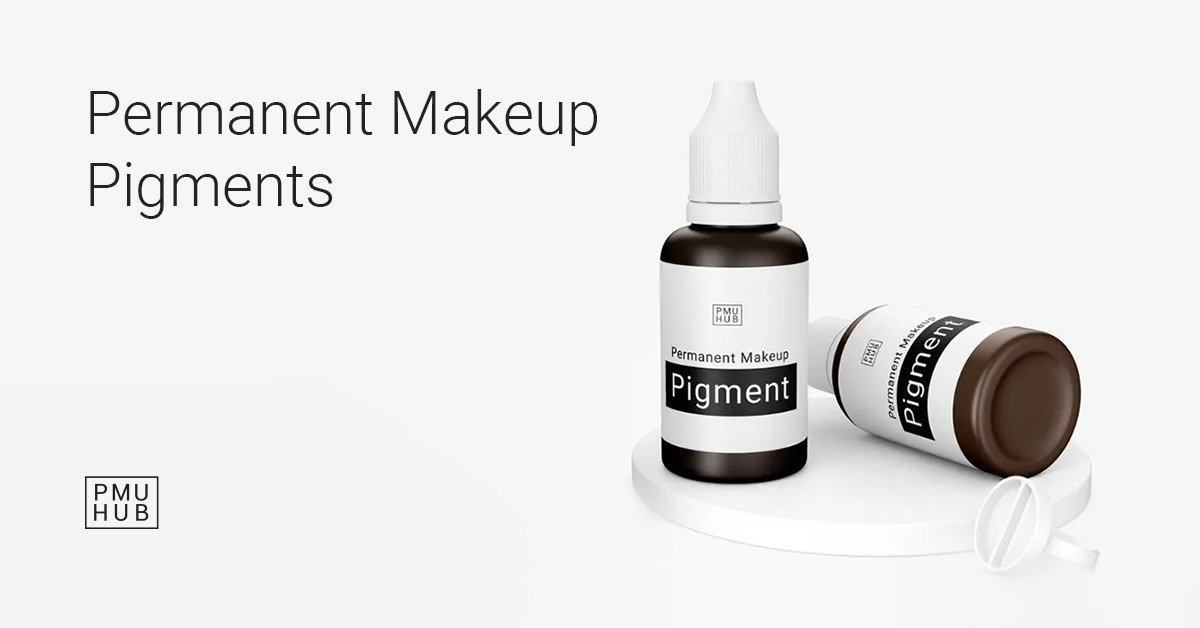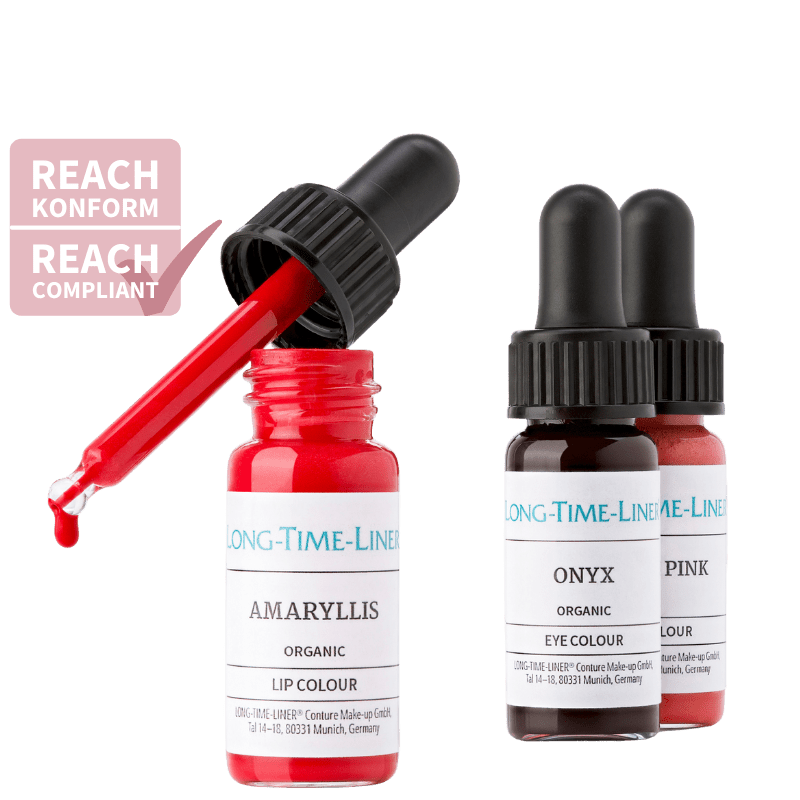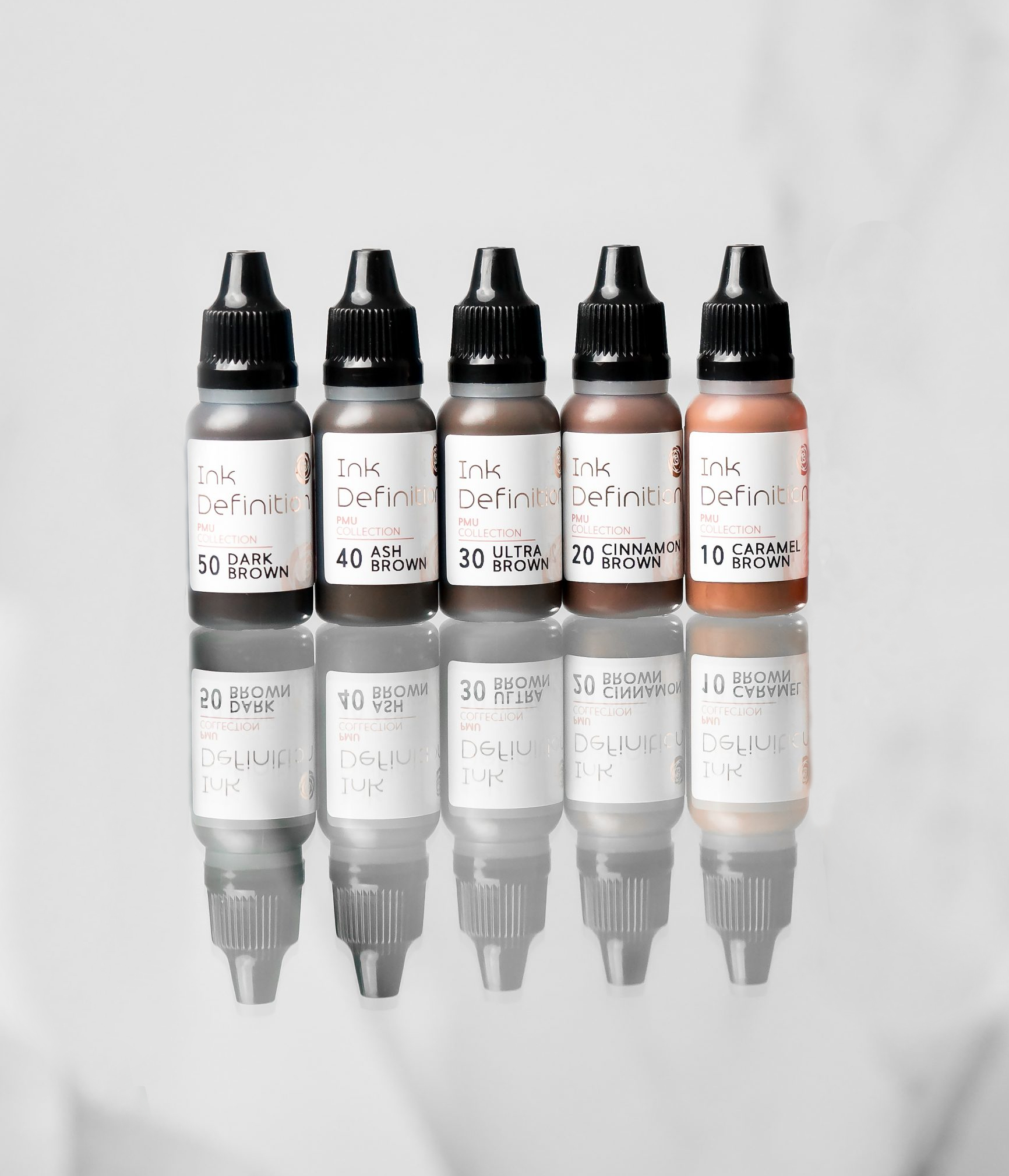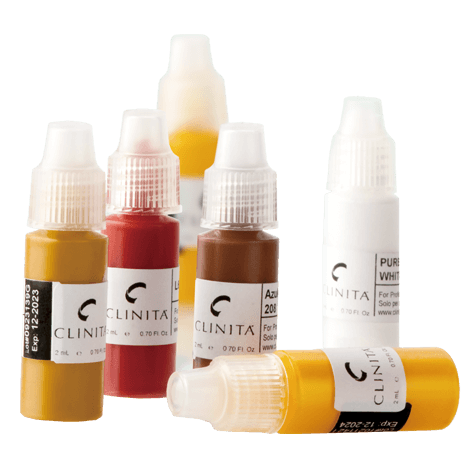Are you curious about PMU pigments and what they are made of? Look no further! In this article, we will dive into the fascinating world of PMU pigments and explore the ingredients that make up these remarkable cosmetic compounds. From eyebrow microblading to lip pigmentation, PMU pigments play a crucial role in enhancing your natural beauty. Join us as we unravel the mystery behind these magical pigments and discover the secrets of their composition.

This image is property of www.pmuhub.com.
What are PMU pigments?
PMU (Permanent Makeup) pigments are specialized pigments that are used in permanent makeup procedures, also known as cosmetic tattooing. These pigments are designed to be implanted into the skin to enhance features such as eyebrows, eyeliner, and lips. PMU pigments are different from traditional tattoo inks as they are specifically formulated for use on the face and are intended to be long-lasting.
Definition of PMU pigments
PMU pigments are cosmetic-grade colorants that are safely and effectively used in permanent makeup procedures. These pigments are made up of various ingredients, including organic and inorganic compounds, that are carefully selected for their stability, safety, and longevity when applied to the skin.
Common uses of PMU pigments
PMU pigments are commonly used in cosmetic tattooing procedures to enhance and define facial features. Some of the most common uses of PMU pigments include:
- Eyebrow enhancement: PMU pigments can be used to create natural-looking eyebrows by filling in sparse areas or reshaping the brows.
- Eyeliner: PMU pigments can be applied along the lash line to create the appearance of fuller and more defined eyelashes.
- Lip augmentation: PMU pigments can be used to enhance the color and shape of the lips, creating a fuller and more defined look.
- Scar camouflage: PMU pigments can be used to conceal scars or imperfections on the skin, helping to create a more even complexion.
By using PMU pigments, individuals can achieve long-lasting and low-maintenance results, enhancing their natural beauty.
Types of PMU pigments
When it comes to PMU pigments, there are various types available on the market. These can be broadly categorized into organic pigments, inorganic pigments, iron oxide pigments, and synthetic pigments. Each type has its unique properties and benefits.
Organic pigments
Organic pigments are derived from carbon-based compounds and are known for their vibrant and intense colors. They are often used in the creation of high-quality makeup products and are commonly found in lipsticks and eyeshadows. In the context of PMU pigments, organic pigments are used to create natural-looking results that blend seamlessly with the skin tone.
Some advantages of organic pigments are their ability to create a wide range of colors, including warm browns, natural reds, and soft pinks. These pigments are often favored for their ability to produce a natural and subtle effect. However, they may fade more quickly compared to other types of pigments, requiring touch-ups over time.
Inorganic pigments
Inorganic pigments are made from mineral-based compounds and are known for their stability and long-lasting effects. They are commonly used in the production of paints and dyes due to their ability to resist fading and discoloration. In the context of PMU pigments, inorganic pigments are used for their longevity and durability.
One of the key advantages of inorganic pigments is their resistance to fading, allowing for longer-lasting results. They are also less likely to migrate within the skin, resulting in more precise and defined makeup. However, inorganic pigments may have a limited color range compared to organic pigments.
Iron oxide pigments
Iron oxide pigments are a specific type of inorganic pigment that is widely used in the cosmetic industry. They are known for their stability, non-toxicity, and wide range of colors. Iron oxide pigments are commonly used in PMU procedures for eyebrow and eyeliner enhancement.
The properties of iron oxide pigments make them ideal for permanent makeup application. They are highly stable and resistant to fading, providing long-lasting results. Iron oxide pigments also have a low risk of allergic reactions, making them suitable for individuals with sensitive skin. However, it is important to note that iron oxide pigments may require more touch-ups over time compared to other types of pigments.
Synthetic pigments
Synthetic pigments are man-made colorants that are specifically developed for use in the cosmetic industry. These pigments are designed to be stable, vibrant, and long-lasting. Synthetic pigments offer a wide range of colors and can be custom-blended to create unique shades.
One of the main advantages of synthetic pigments is their color consistency and predictability. They provide strong and vibrant colors that can be customized to suit individual preferences. Synthetic pigments also have a longer shelf life compared to organic pigments. However, they may have a higher risk of allergic reactions and are generally considered less natural-looking compared to organic or iron oxide pigments.
Composition of PMU pigments
PMU pigments are formulated using a precise combination of ingredients to ensure their safety, stability, and performance when applied to the skin. Some of the common ingredients found in PMU pigments include:
- Pigment colorants: These are the primary ingredients that give the pigment its color. They can be organic or inorganic compounds that are carefully selected for their safety and effectiveness.
- Solvents: Solvents are used to dissolve the pigment colorants and create a smooth consistency. They help the pigment to flow evenly during the application process.
- Thickeners: Thickeners are added to the pigment to control its viscosity and prevent it from spreading too easily.
- Binders: Binders are used to hold the pigment particles together and ensure their adherence to the skin.
- Preservatives: Preservatives are added to prevent the growth of bacteria and other microbes in the pigment formula, ensuring its longevity and safety.
- Stabilizers: Stabilizers are used to maintain the stability and color integrity of the pigment over time.
It is important to note that PMU pigments undergo rigorous testing to ensure their safety and compliance with regulatory standards.
Safety regulations for PMU pigments
The production and use of PMU pigments are regulated by various governmental and industry bodies to ensure their safety and quality. In the United States, the Food and Drug Administration (FDA) regulates the cosmetic industry, including PMU pigments. Additionally, local health departments and licensing boards may have specific regulations in place for the use of PMU pigments.
These regulations include guidelines for the ingredients used in pigments, manufacturing processes, labeling requirements, and hygiene standards in the tattooing industry. It is essential for professionals using PMU pigments to adhere to these regulations to ensure the safety and well-being of their clients.
Organic pigments
Sources of organic pigments
Organic pigments are derived from natural sources such as plants, animals, and minerals. They can be obtained from a variety of sources, including botanical extracts, insects, and earth minerals. Some common sources of organic pigments include:
- Red: Derived from beetles, berries, and certain plants such as madder and cochineal.
- Orange: Obtained from plants such as annatto and turmeric.
- Yellow: Derived from plants such as saffron, marigold, and turmeric.
- Green: Obtained from plants such as spinach, chlorophyll, and spirulina.
- Blue: Derived from plants such as indigo, woad, and certain flowers.
- Violet: Obtained from plants such as grapes, mulberries, and certain flowers.
These natural sources provide a wide range of colors that can be used in PMU procedures to achieve desired results.
Advantages and disadvantages of organic pigments
Organic pigments offer several advantages when used in PMU procedures. First and foremost, they can create natural and subtle results, blending harmoniously with the client’s skin tone. The wide range of colors derived from natural sources allows for customization and a more personalized approach to cosmetic tattooing.
However, organic pigments may have certain disadvantages. Due to their natural composition, they tend to fade faster compared to inorganic or synthetic pigments. This may require more frequent touch-ups to maintain the desired result. Additionally, some organic pigments may have a higher risk of allergic reactions in individuals with sensitivities or allergies to certain natural compounds.
It is important for individuals considering PMU procedures to discuss their options with a professional who can advise on the best pigments for their specific needs and preferences.

This image is property of www.long-time-liner.com.
Inorganic pigments
Sources of inorganic pigments
Inorganic pigments are derived from minerals and are known for their stability and resistance to fading. These pigments are typically sourced from naturally occurring minerals and rocks. Some common sources of inorganic pigments include:
- Titanium dioxide: Used as a white pigment in various cosmetic products, including PMU pigments.
- Iron oxide: Provides a range of colors, including red, brown, and black, and is widely used in permanent makeup procedures.
- Chromium oxide: Used to create green and turquoise shades.
- Ultramarines: Derived from minerals such as lapis lazuli, these pigments offer vibrant blues and purples.
These inorganic pigments provide long-lasting color and are often favored for their durability when applied to the skin.
Advantages and disadvantages of inorganic pigments
Inorganic pigments offer several advantages in permanent makeup procedures. Their stability and resistance to fading make them a popular choice for individuals looking for long-lasting results. Inorganic pigments also tend to stay in place and are less likely to migrate within the skin, resulting in more defined and precise makeup.
However, inorganic pigments may have limitations in terms of color range compared to organic pigments. They are typically available in more muted and earthy tones, which may not suit everyone’s preferences. Additionally, individuals with sensitivities or allergies to certain minerals used in inorganic pigments may experience adverse reactions.
Consulting with a professional and discussing individual needs and preferences is crucial when deciding on the use of inorganic pigments for PMU procedures.
Iron oxide pigments
Properties of iron oxide pigments
Iron oxide pigments are a specific type of inorganic pigment that is widely used in the cosmetic industry. These pigments offer several properties that make them ideal for permanent makeup procedures. Some key properties of iron oxide pigments include:
- Stability: Iron oxide pigments are highly stable, which means they do not easily break down or change color over time. This stability ensures that the pigments retain their original color and do not fade significantly.
- Non-toxicity: Iron oxide pigments are considered safe for use on the skin and have a low risk of allergic reactions. They are approved by regulatory bodies for use in cosmetic applications.
- Versatility: Iron oxide pigments can be used to create a range of colors, including brown, red, and black shades. This versatility allows for customization and the ability to achieve desired results.
- Resistance to migration: When properly applied, iron oxide pigments tend to stay in place and do not migrate within the skin. This ensures that the makeup remains defined and does not blur or spread over time.
Uses of iron oxide pigments
Iron oxide pigments are commonly used in permanent makeup procedures, particularly for eyebrow and eyeliner enhancement. These pigments can create natural and defined eyebrows or eyelash enhancements that last for an extended period. Iron oxide pigments can also be used to provide added color and definition to the lips in PMU procedures.
The versatility and stability of iron oxide pigments make them a popular choice for individuals looking for long-lasting and low-maintenance results in their permanent makeup.
Safety considerations for iron oxide pigments
While iron oxide pigments are generally considered safe for use in permanent makeup procedures, it is important to take certain safety considerations into account. It is crucial to ensure that the pigments being used are sourced from reputable manufacturers and comply with regulatory standards.
Additionally, performing a patch test prior to the procedure can help identify any potential allergies or sensitivities to iron oxide pigments. This involves applying a small amount of the pigment on a small area of the skin and monitoring for any adverse reactions.
By following safety guidelines and working with experienced professionals, individuals can minimize any potential risks associated with the use of iron oxide pigments in PMU procedures.

This image is property of katetiubeauty.com.
Synthetic pigments
Manufacturing process of synthetic pigments
Synthetic pigments are man-made colorants that are specifically developed for use in the cosmetic industry. These pigments are produced through a manufacturing process that involves the synthesis of various chemical compounds. The exact process may vary depending on the specific pigment being produced.
During the manufacturing process, the desired pigments are formed by extensive research and development. They undergo rigorous testing to ensure their stability, safety, and color consistency. Synthetic pigments are usually made under controlled conditions, allowing for precise control over the composition and quality of the pigment.
Advantages and disadvantages of synthetic pigments
Synthetic pigments offer several advantages when used in permanent makeup procedures. They provide vibrant and long-lasting color that remains consistent over time. Synthetic pigments also offer a wide range of colors that can be custom-blended to achieve desired results.
However, synthetic pigments may have some disadvantages. As they are man-made, some individuals may prefer a more natural-looking result that can be achieved with organic or inorganic pigments. There is also a potential risk of allergic reactions for individuals with sensitivities to certain chemical compounds used in synthetic pigments.
Consultation with a professional and discussing individual preferences and concerns is crucial when considering the use of synthetic pigments for PMU procedures.
Safety regulations for PMU pigments
Regulatory bodies overseeing PMU pigments
The production and use of PMU pigments are regulated by various governmental and industry bodies to ensure their safety and quality. In the United States, the Food and Drug Administration (FDA) regulates the cosmetic industry, including the use of pigments in permanent makeup procedures. The FDA sets standards for the ingredients, manufacturing processes, labeling requirements, and hygiene practices in the tattooing industry.
Additionally, individual states and local health departments may have specific regulations and licensing requirements for professionals performing PMU procedures. These regulations aim to protect the well-being of consumers and ensure that procedures are conducted safely and responsibly.
Testing and certification requirements for PMU pigments
PMU pigments undergo rigorous testing and certification requirements to ensure their safety and compliance with regulatory standards. Manufacturers are responsible for conducting comprehensive tests to assess the safety and stability of their pigments. These tests include evaluations for potential skin irritation, allergic reactions, color consistency, and longevity.
Certification bodies, such as the FDA, may review the test results and issue certifications or approvals for pigments that meet the required standards. It is essential for professionals using PMU pigments to ensure that they are sourcing their pigments from reputable manufacturers who comply with regulatory requirements.
By selecting pigments that have been tested and certified, professionals can ensure the safe and effective use of PMU pigments in their procedures.

This image is property of www.clinita.it.
Choosing the right PMU pigments
Factors to consider when selecting PMU pigments
When selecting PMU pigments for a procedure, there are several factors to consider. These factors will help ensure that the pigments chosen are suitable for the individual’s needs and preferences. Some important factors to consider include:
- Skin tone: The pigments used should complement the individual’s skin tone and create a natural-looking result. Matching the pigment color to the client’s skin tone is crucial for achieving the desired outcome.
- Desired effect: Different pigments can create different effects, ranging from subtle to dramatic. Discussing the desired effect with a professional can help determine which pigments will best achieve the desired result.
- Longevity: Individuals should consider how long they want the makeup to last. Some pigments may require more frequent touch-ups, while others may provide longer-lasting results.
- Allergies and sensitivities: It is important to disclose any known allergies or sensitivities to pigments or other cosmetic ingredients to the professional. This will help ensure that the pigments chosen are safe and suitable for the individual’s skin.
By considering these factors and consulting with a professional, individuals can select the right PMU pigments that will best suit their needs and preferences.
Consultation with a professional
When considering PMU procedures, it is crucial to consult with a professional who is experienced in permanent makeup. A skilled and knowledgeable professional will be able to assess the individual’s needs, discuss the available options, and provide guidance on the selection of pigments.
During the consultation, the professional will take into account factors such as skin tone, desired effect, and individual preferences to recommend the most suitable pigments. They will also provide information on the safety, durability, and maintenance required for the chosen pigments.
Working with a professional ensures that the PMU pigments used are applied safely and effectively, resulting in the desired outcome.
Conclusion
Understanding the composition, types, and uses of PMU pigments is essential for individuals considering permanent makeup procedures. PMU pigments offer a range of colors and effects that can enhance and define facial features, providing long-lasting and low-maintenance results.
Organic pigments provide natural-looking results, while inorganic pigments offer stability and durability. Iron oxide pigments are known for their longevity and low risk of allergic reactions. Synthetic pigments offer vibrant colors and versatility.
Safety regulations and testing requirements ensure the quality and safety of PMU pigments. Professionals must comply with these regulations to ensure the well-being of their clients. When selecting PMU pigments, factors such as skin tone, desired effect, and personal preferences should be considered. Consulting with an experienced professional is crucial for achieving the best results and safe application of PMU pigments.
By understanding the different types and properties of PMU pigments, individuals can make informed decisions and choose the right pigments for their permanent makeup procedures. With the help of professionals like Elizabeth Smith at Million Dollar Brows, individuals can achieve personalized and beautiful results in their PMU procedures.




